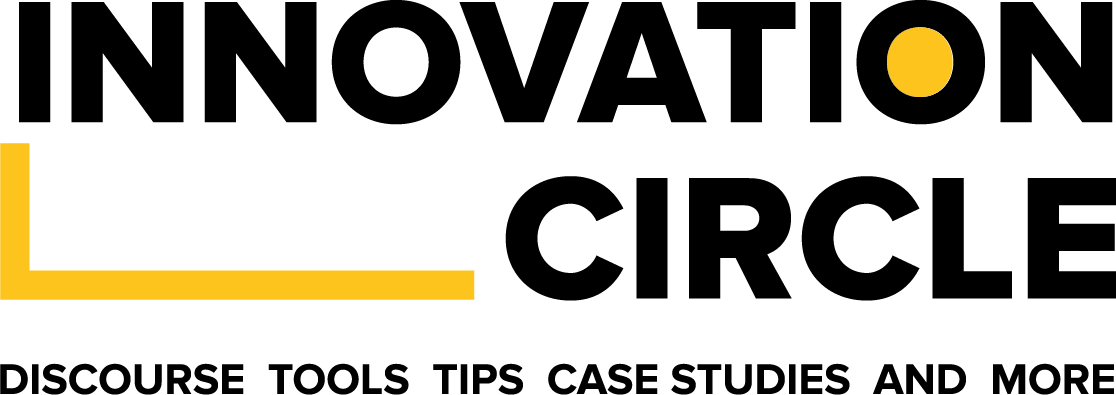
4 Ways to Inspire and Drive Innovation Within Your Organization
To successfully drive innovation within a large company, there needs to be a process starting from an innovation strategy that spreads into tactics that different stakeholders can carry out.
Do you find the word ‘innovation’ being discussed within your organization more than ever before? Increasingly, innovation is taking centre stage as the world evolves quickly, influenced by trends brought on by the COVID-19 pandemic, bursting open of racial injustice, digitization and more. How ever fast our world seems to be moving, many might argue that the activities within companies geared towards innovation are struggling to keep up the pace. Some might feel overwhelmed by the buzzword ‘innovation’ and may be intimidated not knowing where to start or how to power through. To successfully drive innovation within a large company, there needs to be a process starting from an innovation strategy that spreads into tactics that different stakeholders can carry out. For this to happen, organisations need the help of Business Designers. However, to aid the process along, teams need to adopt a mindset and low-hanging practices, such as prioritising innovation efforts within the organisation, removing silos to allow for cross pollination of ideas, inculcating the practice of iteration and experimentation, top-down buy-in and a company or team-wide adoption of a designer’s mindset.
Prioritise innovation and innovation efforts
To drive this point home, and for teams aiming for more creativity within their organisations, it is important to note that while creativity is good and needed, it shouldn’t be mistaken for innovation. To prioritise innovation efforts within your team, it is important to incorporate practices that lead to more valuable solutions for customers and more cutting-edge solutions in the market. Activities like quantitative and qualitative research methods to understand users, the need for iteration and experimentation in both internal and external-facing operations and opening up avenues to spot opportunities for innovation, be it customer needs, global trends or organisational goals.
Remove silos and allowing collaboration (along with relaxing rigid hierarchical structures).
Collaboration in any form serves as a breeding ground for ideas to cross-pollinate and form. For large companies, it is common for teams to be separated by floors, walls, departments and more recently, remote work. For large businesses, conscious steps need to be taken to reduce or totally remove the separation between different departments as the case may be. Innovation and design firms will affirm that bringing in people from a variety of disciplines enrich any initiative targeted at bringing novel solutions to bear.
McKinsey’s widely popular value of design’s report shows ‘convening of cross-functional talent’ as one of the 4 traits leveraged by companies that increased revenue and Total Return to Shareholders at ’nearly twice’ the rate of their industry peers.
So how does one go about removing silos in well structured legacy companies? You can start with less risky and simpler methods of building teams from different departments to focus on an idea. Here, these individuals from different disciplines and departments are still able to return to their departments. Another way is bringing in relevant (and in some cases seemingly non-relevant) individuals to the topic at hand, from different departments to work together on a given project. These are initial or ‘baby-steps’ to allowing cross-pollination of ideas as novel solutions are sought and built for customers.
Inculcating iteration and experimentation practices
A culture of continuous experimentation is needed to drive valuable and competitive solutions for the end consumers. Iteration, as the practice of learning customer wants and needs, building, testing, learning and iteration on learnings and doing it fast is a golden practice needed to drive innovation in any organisation. For a leader, seeking to drive change and bring about growth, that means hiring UX researchers, Design researchers, Data Analysts and Data Scientists, to study and understand customer patterns and behaviours, utilise modest, cost-effective ways of testing and inform on new and insightful ways of creating value for them as well as for internal stakeholders, all the while embracing an attitude of learning.
Having Top-down Support
In Havard Business Review’s 2018 article: ‘The Biggest Obstacles to Innovation in Large Companies’, almost 30% cited ‘lack of executive support’ and ‘lack of CEO support’ as obstacles to innovation. To drive innovation, top-level executives must buy into it, they must also make moves to bring professionals into the organization in senior levels and create high-level strategies that flow down into measurable and actionable activities. Not so new anymore, is another practice of bringing in Chief Design Officers to champion the cause across their organisations, from a top-level.
Adopting a designer’s mindset
An innovation practitioner will tell you, of all the ingredients that are needed for innovation, adopting a designer’s mindset is critical. The actions we have stated above all stem from a designer’s perspective and profession. What is the value of having this mindset? It is a mindset steeped in providing value to the customer, (an important part of the innovation equation), it also is set to think and build iteratively, using insights and learnings to constantly improve. With the growing popularity of business design, the much-needed requirement of including business methods within the practice of innovation to answer to stakeholder business goals are answered to. Hiring designers, or training your innovation or strategy team in core design principles and processes, allow a much more seamless entry of design into your organization. Doing so will ensure there’s always champions driving innovation and growth in your company.
